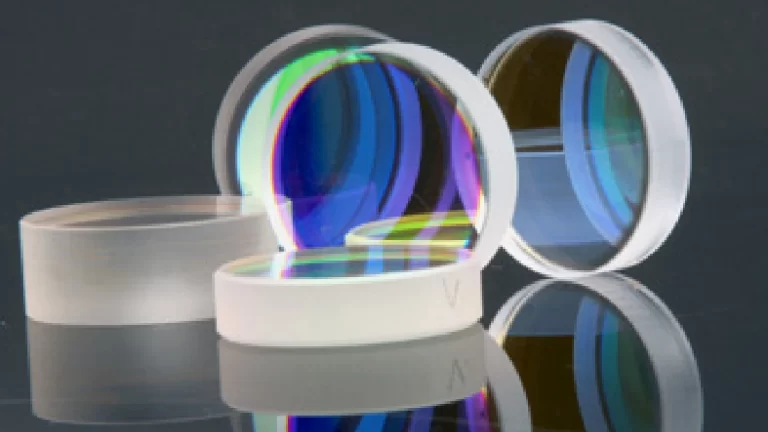Bandpass Filters: Lighten Up Your Optics
If you’re looking to improve the performance of your optical system, a bandpass filter may be just what you need! Bandpass filters allow light of certain wavelengths through while blocking all others. This can be extremely useful in optical systems where you want to isolate a specific wavelength or range of wavelengths. In this blog post, we will discuss the basics of bandpass filters and how they can be used to improve your optics. Stay tuned for more information!
What is an optical bandpass filter?
An optical bandpass filter is an optical filter that allows only certain wavelengths of light to pass through it. It is typically used to remove unwanted light from a signal, or to isolate a particular wavelength of interest.
What are its uses?
An optical bandpass filter is used to allow only a certain range of wavelengths of light to pass through it. This can be useful for blocking out unwanted light, such as glare or reflections, while still allowing the desired wavelength(s) to reach the sensor or film. Bandpass filters are also used in fluorescence microscopy, where they can be used to selectively excite certain fluorophores while blocking out the emission from others.
How does an optical bandpass filter work?
An optical bandpass filter is a device that selectively transmits light within a certain wavelength range while blocking all other wavelengths. Typically, these filters are used to remove unwanted light from an image or spectrum. For example, an astronomical telescope equipped with an optical bandpass filter can be used to block out the light from the Sun, Moon, and other bright objects in order to better see faint objects such as stars and galaxies.
Types of optical bandpass filters
There are three types of optical bandpass filters- absorption, reflection, and interference.
Absorption filters: Absorption filters work by selectively absorbing certain wavelengths of light while letting others pass through. They’re made of materials like dyes or pigments that only absorb light within a specific wavelength range. Absorption filters are well suited for use in photography and videography because they don’t introduce any distortions to the light that passes through them.
Reflection filters: Reflection filters reflect certain wavelengths of light while letting others pass through. They’re made of materials like dichroic mirrors that only reflect light within a specific wavelength range. Reflection filters are often used in microscopy and telescopes because they can be made very thin, which minimizes the amount of light lost when using them.
Interference filters: Interference filters work by combining the principles of reflection and refraction. They’re made of thin layers of dielectric material that reflect some wavelengths of light and refract others. The thicknesses of the layers are carefully designed to only allow light within a specific wavelength range to pass through. Interference filters are commonly used in spectroscopy and sensing applications because they can be designed to pass very specific wavelength ranges.
All three types of optical bandpass filters can be used to create images with high contrast and accurate colors. Which type you use will depend on the specific application you’re using it for.
Applications for optical bandpass filters
Bandpass filters have a wide range of applications in the field of optics. They can be used to protect sensitive optical equipment from damage by excessive light, to remove unwanted background light from an image, or to improve the contrast of an image.
Fluorescence Microscopy: One common application of bandpass filters is in fluorescence microscopy. In this type of microscopy, a sample is illuminated with light of a specific wavelength, and the fluorescence emitted by the sample is collected and imaged. By using a bandpass filter to remove unwanted background light, the contrast of the image can be improved.
Astronomy: Another common application of bandpass filters is in astronomy. In order to image distant objects, astronomers often use telescopes equipped with special cameras that are sensitive to specific wavelength ranges of light. By using a bandpass filter, astronomers can remove the light from sources that are not of interest, and improve the contrast of their images.
Industrial Applications: Bandpass filters can also be used in industrial applications, such as welding or glass cutting. In these applications, a bandpass filter can be used to remove the light of specific wavelengths that are harmful to the eyes.
Bandpass filters are a versatile tool that can be used in a wide variety of applications. If you are looking for a way to improve the contrast of your images or remove unwanted background light, a bandpass filter may be the perfect solution.
Important FAQs:
1. What is a bandpass filter?
– A bandpass filter is an optical device that transmits a specific range of wavelengths while blocking others.
2. How does a bandpass filter work?
– It selectively allows light within a certain bandwidth to pass through while attenuating light outside that range.
3. What are the applications of bandpass filters?
– They are used in spectroscopy, fluorescence microscopy, remote sensing, and telecommunications, among others.
4. What types of bandpass filters are there?
– They can be categorized as interference filters, absorption filters, or dichroic filters.
5. What is the role of bandwidth in bandpass filters?
– Bandwidth determines the range of wavelengths that can pass through the filter, affecting the specificity of the filter’s function.
6. How are bandpass filters characterized?
– They are characterized by parameters such as center wavelength, bandwidth, and transmission efficiency.
7. What is the difference between narrowband and broadband bandpass filters?
– Narrowband filters have a smaller bandwidth and higher spectral resolution, while broadband filters cover a wider range of wavelengths.
8. Can bandpass filters be customized?
– Yes, manufacturers offer customization options for specific wavelength ranges and performance requirements.
9. How do I choose the right bandpass filter for my application?
– Consider factors like the desired wavelength range, bandwidth, transmission efficiency, and environmental conditions.
10. Can bandpass filters be used with other optical components?
– Yes, they can be integrated into optical systems alongside lenses, mirrors, and detectors to achieve specific optical functions.
Thank you for reading and exploring the world of bandpass filters with us! If you have any further questions or topics you’d like to see covered, feel free to reach out. Happy filtering!







